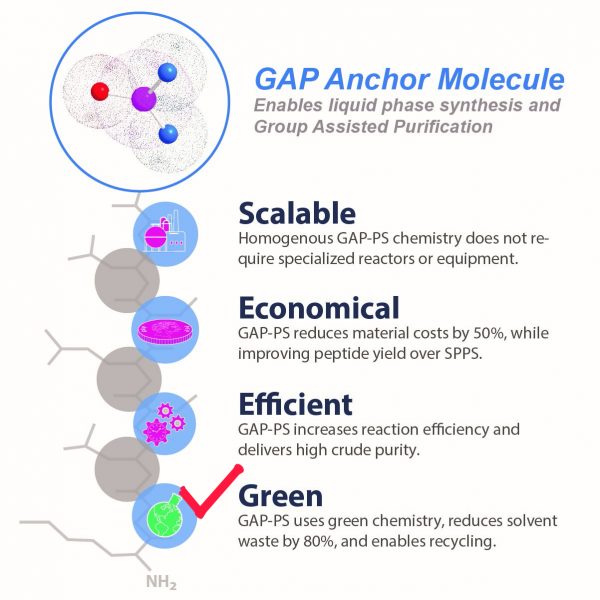5/12/2021

This new blog series is designed to illustrate the advantages of Group Assisted Purification Peptide Synthesis (GAP-PS) from GAP Peptides, based on the four foundational principles of our philosophy. Those principles are Scalability, Efficiency, Economy, and Green Chemistry (+ Quality). One of the easiest ways to do this is by highlighting peer-reviewed papers applicable to these topics.
A publication, authored by one of the most impressive collections of authors’ affiliations ever seen by this writer, makes a powerful case and lays out a roadmap for Green Chemistry. Of course, we are very pleased that it also references our patented technology, and a paper authored by our founder.
The paper, Sustainability Challenges in Peptide Synthesis and Purification: From R&D to Production, has authors from GlaxoSmithKline, AstraZeneca, Bristol-Myers Squibb, Eli Lilly, IPSEN Manufacturing Ireland, Novartis, Amgen, and Boehringer Ingelheim Pharmaceuticals! It takes the reader from classi- cal approaches and ways to improve on those norms, on to novel peptide synthesis methodologies.1
As the authors note in the abstract, they aim, “…to summarize the current challenges of peptide syn- thesis and purification in terms of sustainability, highlight possible solutions, and encourage synergies between academia, the pharmaceutical industry, and contract research organizations/contract manu- facturing organizations.”1
As a dynamic and pioneering company, GAP Peptides has espoused these synergies with the ap- proach they advocate, since its inception. Our embrace of Green Chemistry, combined with our pat- ented Group Assisted Purification Peptide Synthesis (GAP-PS), allows chemists to deliver peptides with fewer resources, greater safety, and less hazardous waste than traditional methods. We invite you to investigate our contract research service, which in addition to those advantages, also offers a lower cost than traditional synthesis methods. Sustainability with less expensive synthesis – what’s holding you back? Contact GAP Peptides for more information today!
Reference
A. Isidro-Llobet, M.N. Kenworthy, S. Mukherjee, M.E. Kopach, K. Wegner, F. Gallou, A.G. Smith, and F. Roschangar, The Journal of Organic Chemistry, 84 (8), 4615-4628 (2019). DOI: 10.1021/acs. joc.8b03001
